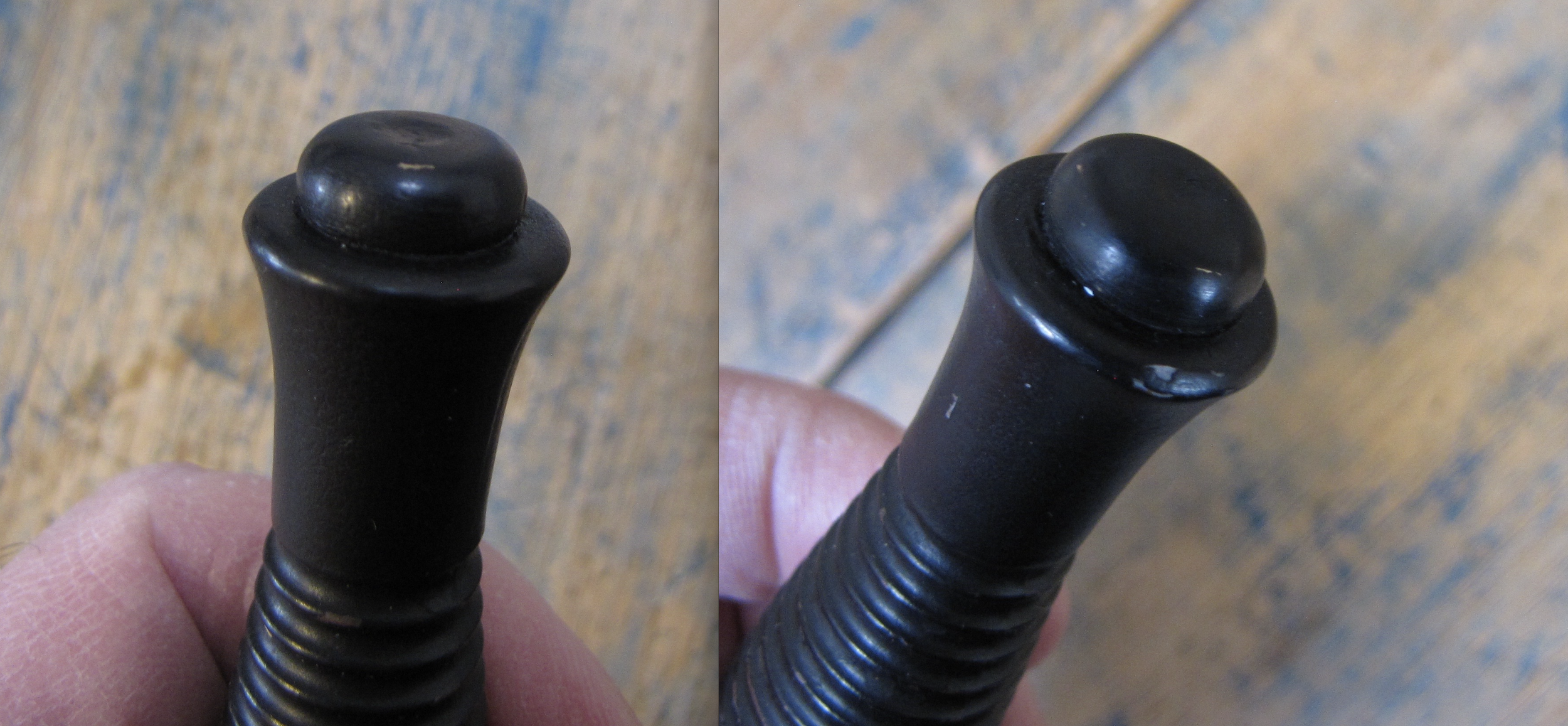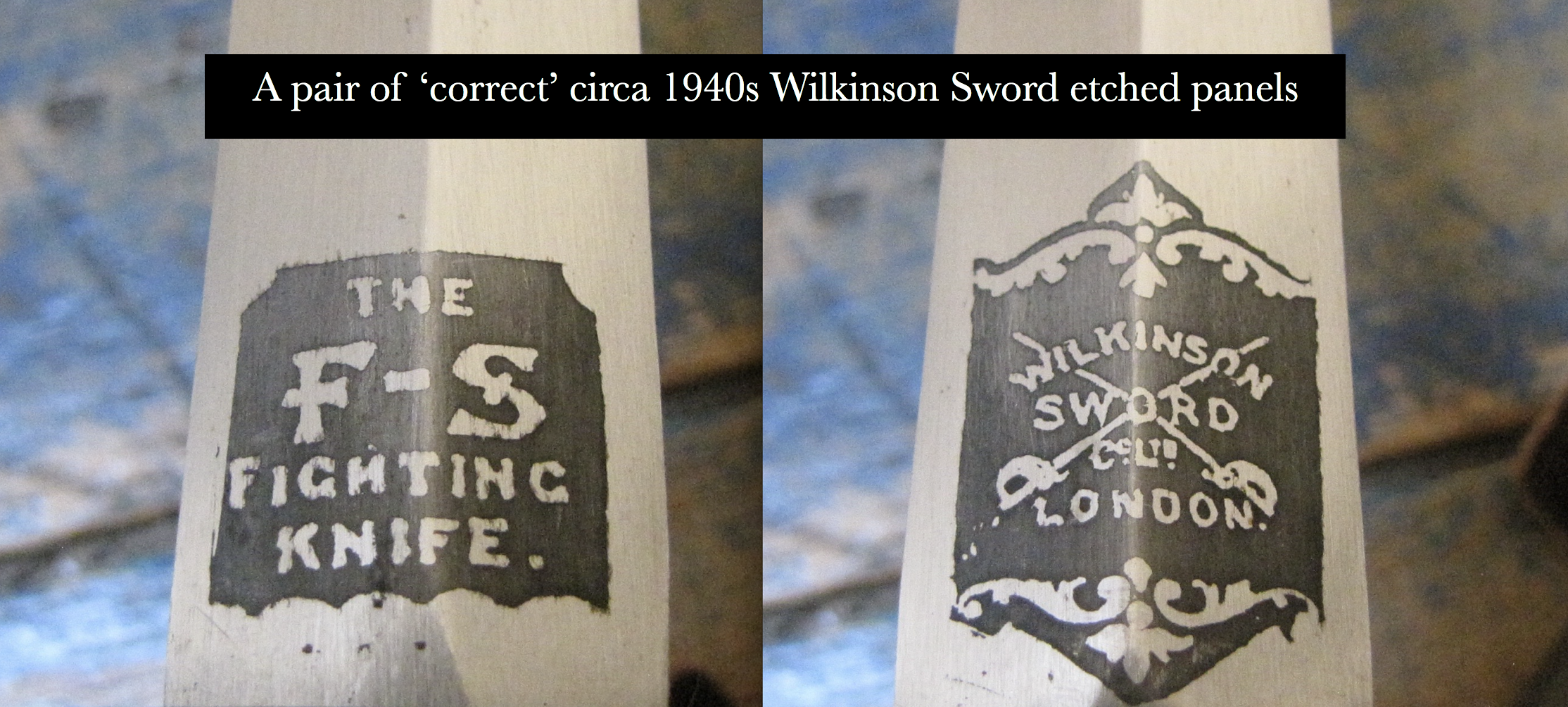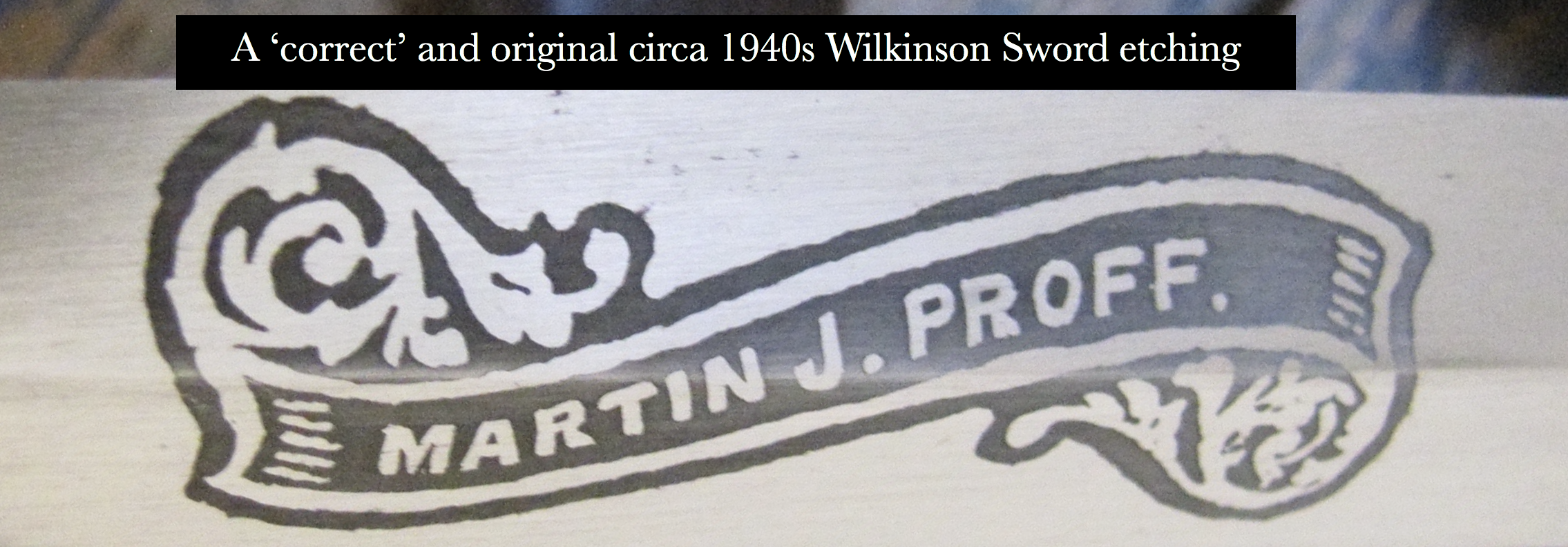Two Well Constructed ‘Fake’ Wilkinson F-S Knives
Introduction
At first glance, what you see below is a pair of convincing WWII ‘Wilkinson’ F-S Knives - one a rare etched Third Pattern and the other a very rare (Type II) Second Pattern with personal etched scroll. However and on close inspection ‘both’ knives appear to have started their life as standard Wartime production knives that have been altered and embellished with ‘modern’ etching panels, no doubt in order to elevate their value from hundreds to thousands of dollars. What follows, is a detailed examination of both knives in an effort to ‘un-pick’ the process of their creation and reveal their true origin.
The (Fake) Third Pattern
The Third Pattern shown below has all the correct attributes of a standard late-war Third Pattern F-S including a correct cast-grip mould number of ‘1’. However the construction details of the late-war production of Third Pattern are not the same as one would expect on a Wilkinson made Third Pattern from the mid to late-war period. Please see further details and comparisons below to highlight and explain these discrepancies.
A ‘fake’ Wilkinson Third Pattern F-S, created by utilizing a late-war production (non-Wilkinson) Third Pattern F-S donor knife and applying modern etching panels.
In comparison to the image at left showing a correct pommel nut found on a Wilkinson Third Pattern F-S, please study the images below on the fake knife. One can clearly see that the shape and form of the pommel nut is wrong (for a Wilkinson knife of this period) and would be more correct for a knife not made by Wilkinson and of the standard late-war pattern. Also note the different finish; on the correct Wilkinson Third Pattern, the black finish has faded from handling, now showing the base copper wash applied with only the dark finish present in the grip recesses. In stark contrast the fake knife has a pristine and vivid blade finish to the grip ‘and’ pommel nut, showing zero softening or wear, something that is almost never seen on all but the most pristine examples and even then, some wear, loss of finish or softening is to be expected. Perhaps indicating that this knife has been disassembled to work on and refinished?
Two images showing different views of the fake knife. You can clearly see the shape of the pommel nut does not conform to those used by Wilkinson. Also note the near perfect overall black finish - not something one would expect to see on a knife that is over eight decades old.
Compare the standard and totally correct 1940s etching panel (shown at left) to the one shown at right. Although the correct etching is of high quality, it was produced and applied in the 1940s during the ‘analog’ or pre high definition ‘digital’ age we now find ourselves in. As such the modern etching at right had a level of definition and quality that was simply not attainable in the 1940s. The etching panels used to create these fake knives are quite possibly genuine Wilkinson etching BUT if that is the case, they are almost certainly from the 1990s to 2005 and probably obtained when Wilkinson ceased knife production in 2005 and all knives, parts and components were sold off.
The (Fake) Second Pattern
The Second Pattern shown below ‘would’ be a very rare knife indeed IF correct. The Wilkinson Type II (all blued) is a rare knife and with a personal etching is exceptionally rare and desirable. However this example appears to have started life as a standard MoS contract knife subsequently sold as surplus post-war and then has had modern etchings applied to ‘enhance’ its value. All three etching panels are NOT of the type used during Wilkinson’s wartime production.
The two markings shown above in their own right are correct ‘but’ are inconsistent with an ‘etched’ Wilkinson knife. The first mark (shown at left) is a Ministry of Supply ownership stamp (aka Broad Arrow or Crows Foot). This stamp is almost certainly a slightly miss-stamped MoS inspection/ownership stamp of ‘⩚B2’ with the latter two characters not visible, a common occurrence. The addition of an MoS stamp would indicated that this knife was a military contract knife and NOT a privately purchased F-S that would have etchings! The ‘ENGLAND’ stamp at right confirms this to be a military contract knife, as this proves this knife was sold by the British Government in the post-war years into the US market as surplus. Something that simply would not happen to a privately purchased Wilkinson F-S.
The standard FS & WS etching panels on this knife (shown above) should NOT be found on a standard MoS military contract knife. Further, both etching panels are of such high clarity and resolution, they could not have been produced and applied during the 1940s and although possibly from Wilkinson are most likely modern and post 1990.
A totally correct set of wartime produced and applied Wilkinson Sword etching panels. Note details of the lettering and lack of high resolution seen on the modern etchings shown above this image.
The scroll etching panel is of the same design used by Wilkinson during wartime production BUT is modern and absolutely NOT correct for the 1940s. The font is completely wrong, note the use of serifs on each letter. Again, a modern etching (post 1990s) applied to a wartime knife. Compare this to the correct wartime etching shown below.
On this totally correct and original wartime Wilkinson scroll etching, the lack of vivid clarity in comparison to the modern etching is plainly visible. Compare the letters ‘M’ ‘P’ & ‘R’.
Conclusions
It seems clear from the details shared above that someone has taken two perfectly good wartime production knives and applied modern etchings. These modern etchings are of such good quality it is reasonable to assume that they likely originated from Wilkinson Sword, perhaps at the time when Wilkinson closed the knife making side of the business in 2005 and sold off all part. Why would someone go to all this trouble? I think the answer is clear, to elevate the value of knives that would have been worth a few hundred dollars into knives worth ten times that amount, in the process creating two ‘fake’ knives for financial gain. A great shame.











